0-10,000 YEARS, AND RADIONUCLIDE DECAY SERIES
The ORIGEN computer model developed at Oak Ridge National Laboratory (ORIGEN2 for personal computers and ORIGEN-S for UNIX workstations) calculates the buildup, decay, and processing of radioactive materials [1]. ORIGEN simulates nuclear fuel cycles and calculates nuclide compositions and characteristics of materials. One of the principal uses of ORIGEN is to project the composition and characteristics of radioactive wastes for regulatory purposes [2].
ORIGEN solves the following nonhomogeneous first-order ordinary differential equation using a matrix exponential method [2]:
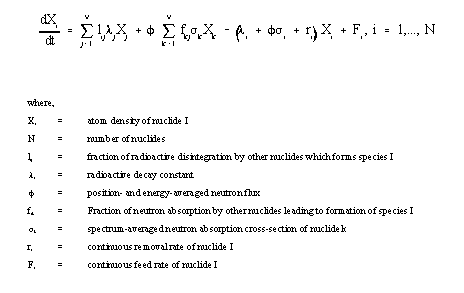
For radioactive decay calculations without irradiation of the materials, such as those needed to project the composition of radioactive waste in the future, this equation simply reduces to the Bateman equation for each nuclide present in the initial inventory:

ORIGEN obtains data from the decay library regarding the half-lives and decay branching fractions of the radionuclides listed in the input file. The code then calculates the daughter of each nuclear decay or transformation and the rate at which the accumulation occurs. This information is temporarily stored in an array and used to obtain all parents of a given daughter nuclide [2]. The user directs the length of time that the decay is to be observed by using the DEC command card in the input file. As many as 150 decay time intervals can be specified depending on other commands the user wishes to implement in any given ORIGEN run. The final output yields the concentrations of the parent and daughter nuclides at the end of each time interval specified by the user.
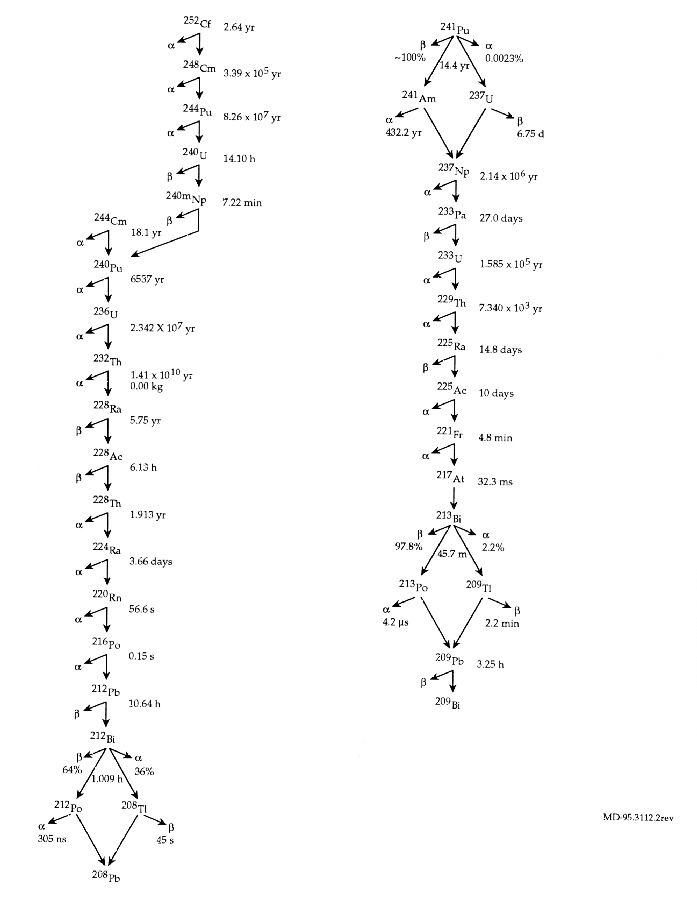
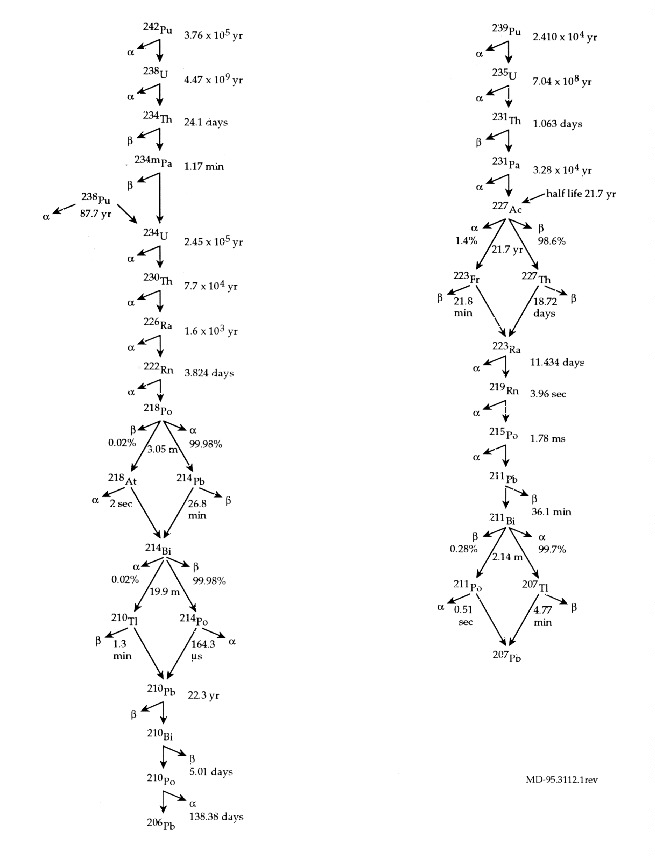
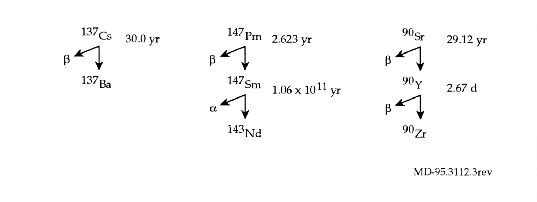
Rererences
1. Croff, A. G., "A User's Manual for the ORIGEN2 Code," ORNL/TM-7175, Oak Ridge National Laboratory, July 1980.
2. Croff, A. G., "ORIGEN2: A Versatile Computer Code for Calculating the Nuclide Compositions and Characteristics of Nuclear Materials," Nuclear Technology, Vol. 62, pp. 335- 352, November 1983.
WIPP CH-TRU Waste Study Data Tables
Figure 1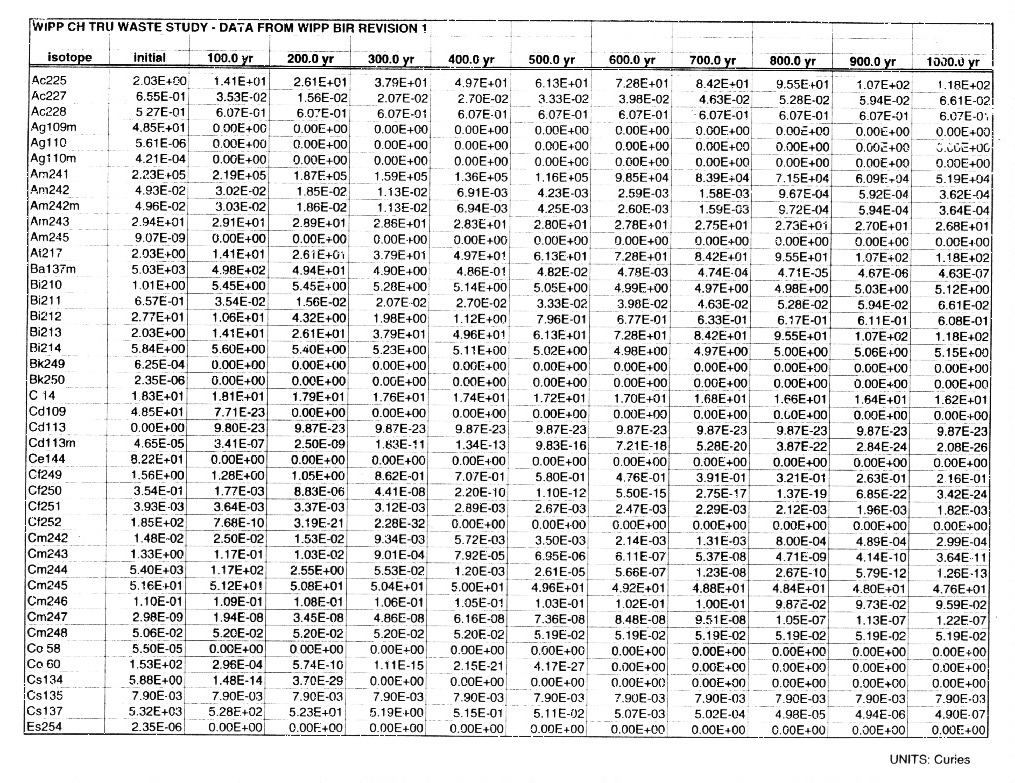
Figure 2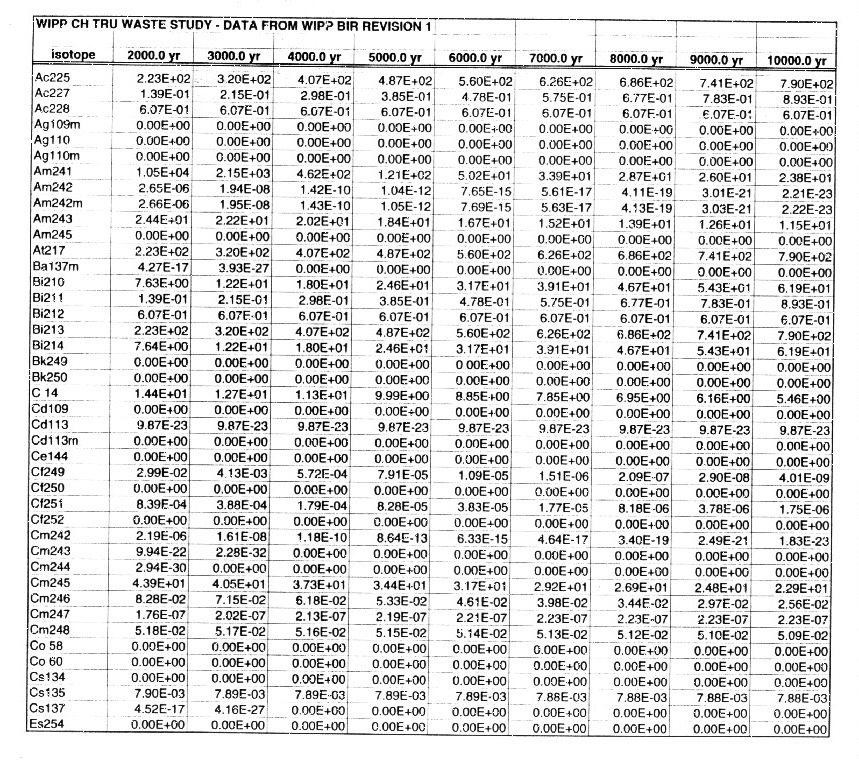
Figure 3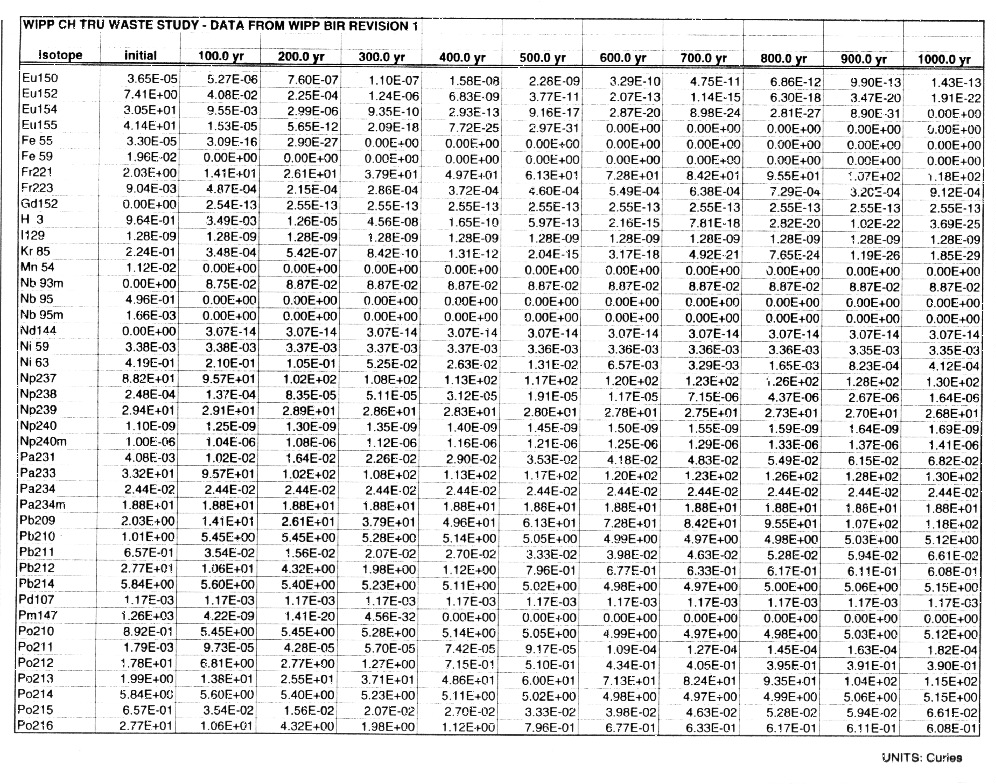
Figure 4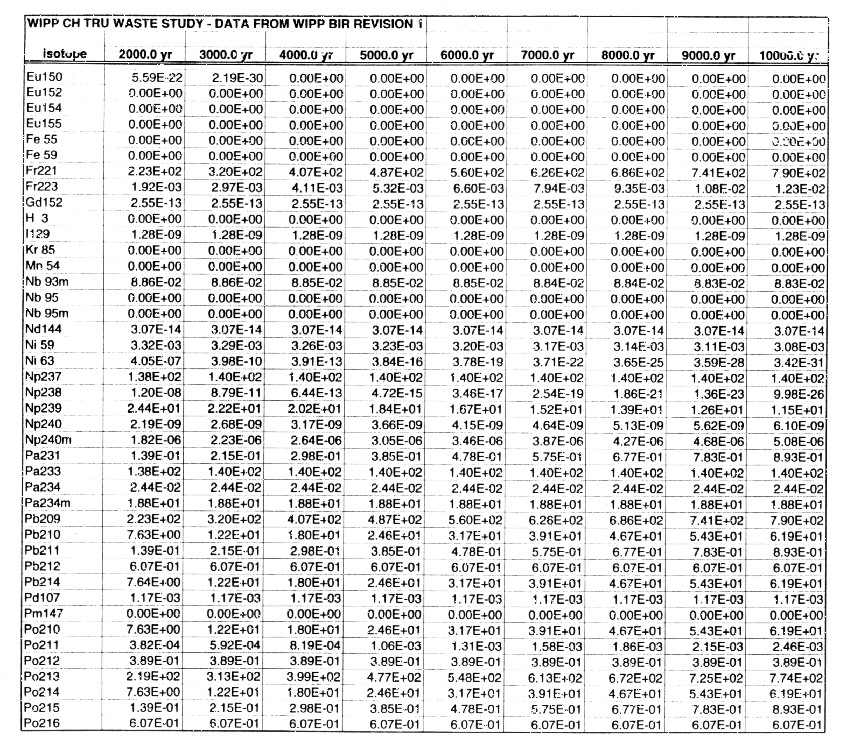
Figure 5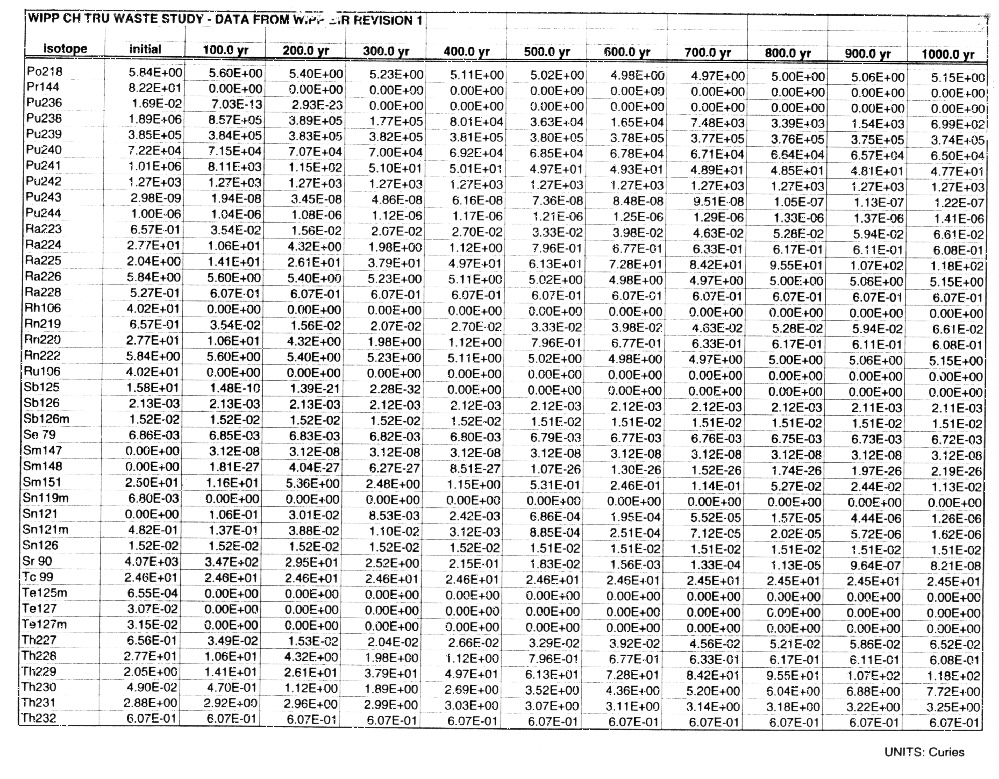
Figure 6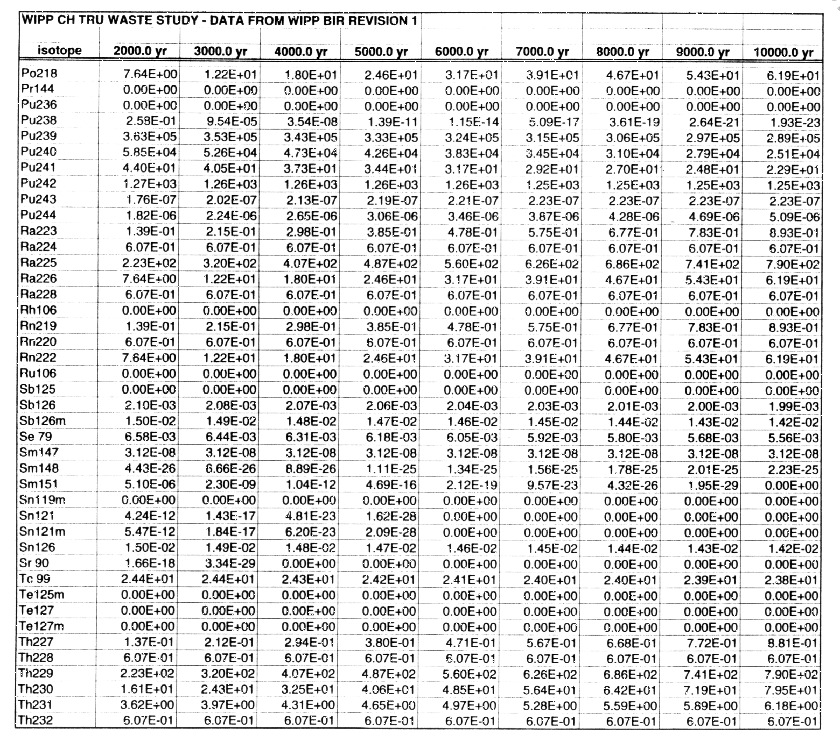
Figure 7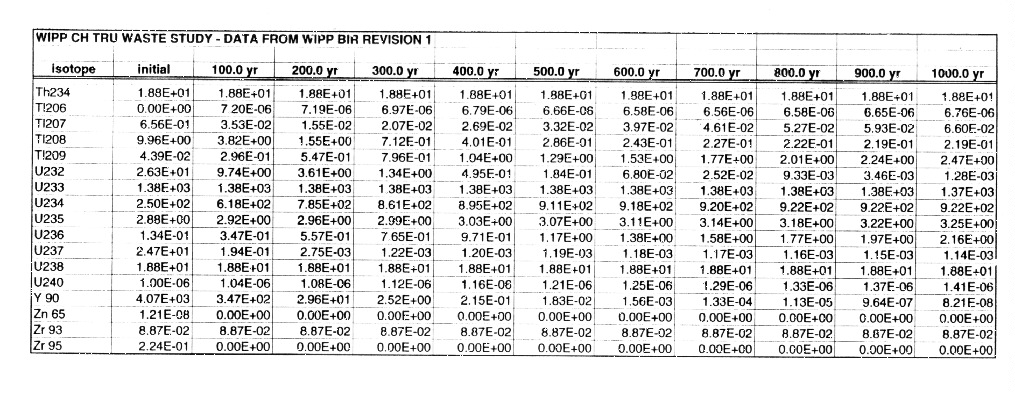
Figure 8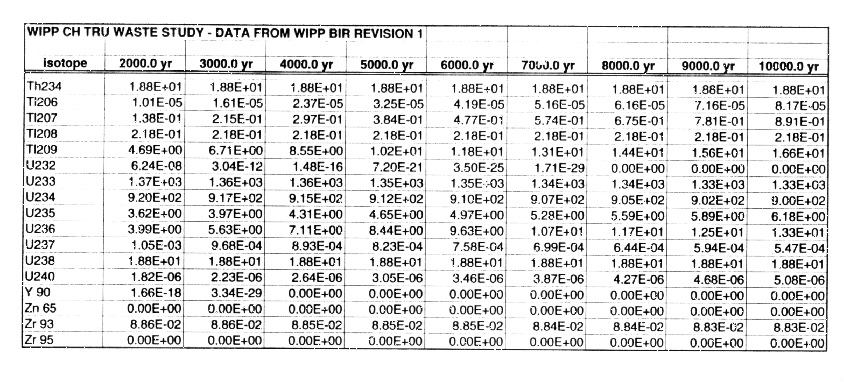
WIPP RH-TRU Waste Study Data Tables
Figure 1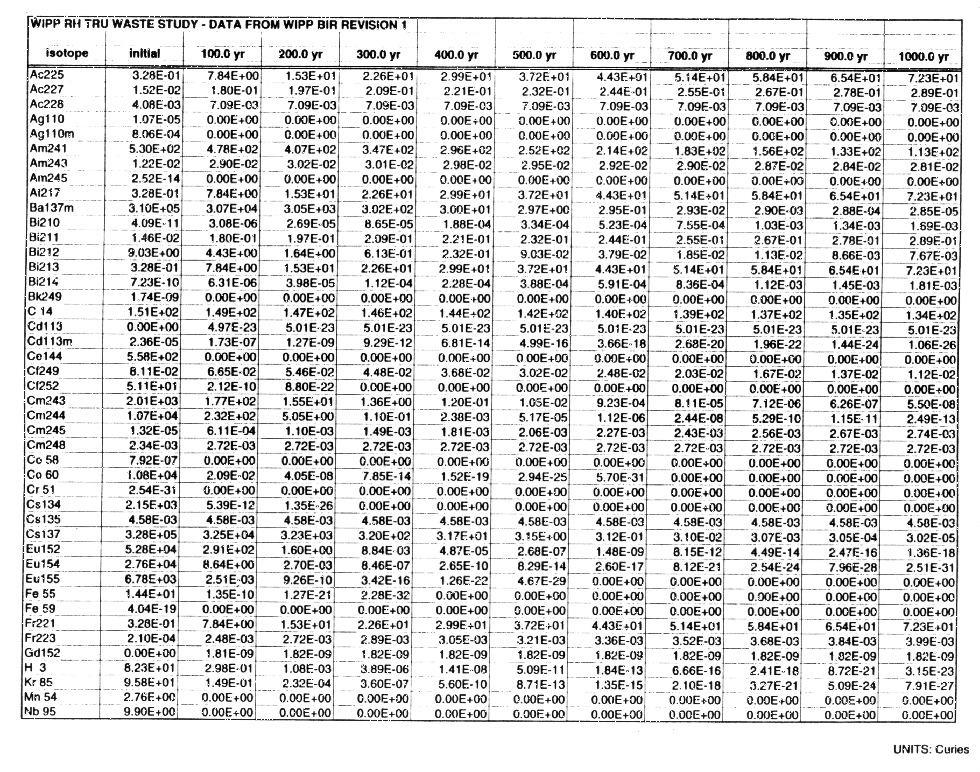
Figure 2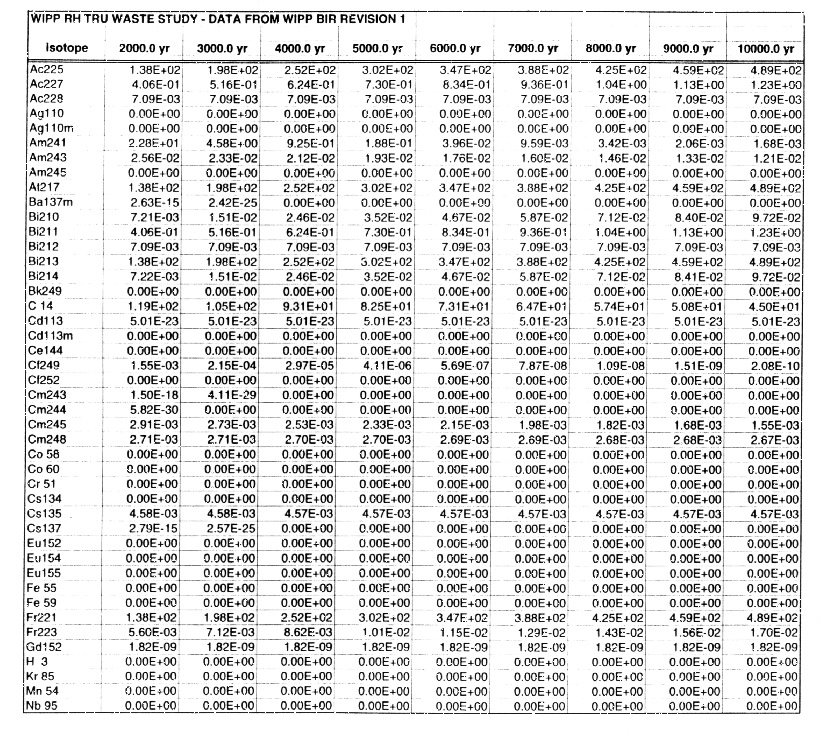
Figure 3
Figure 4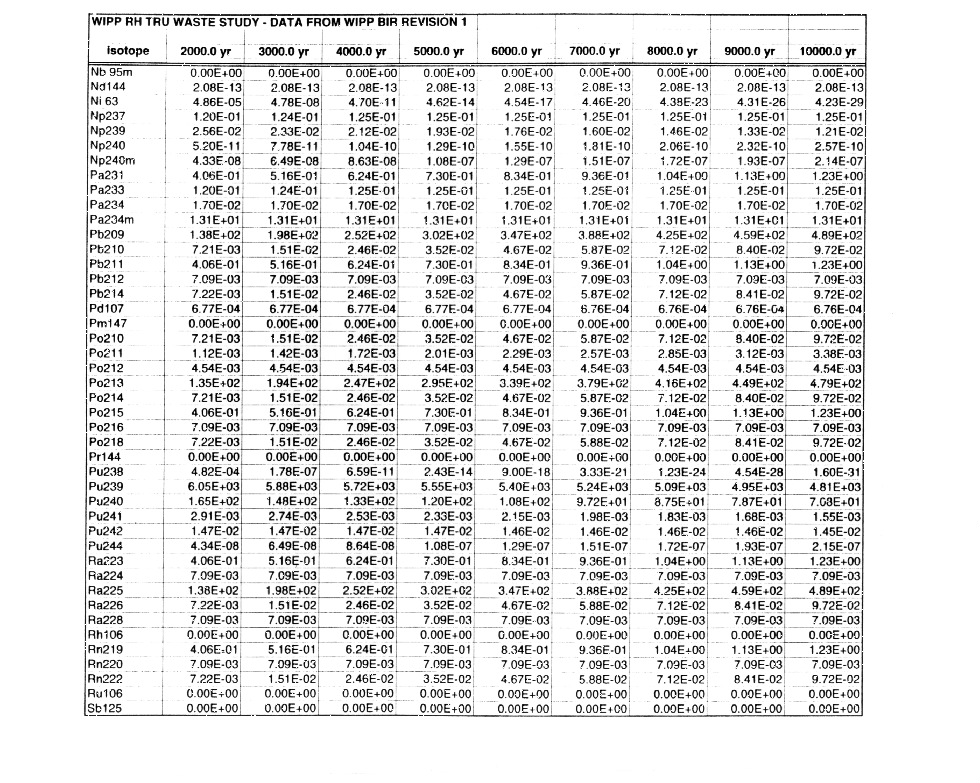
Figure 5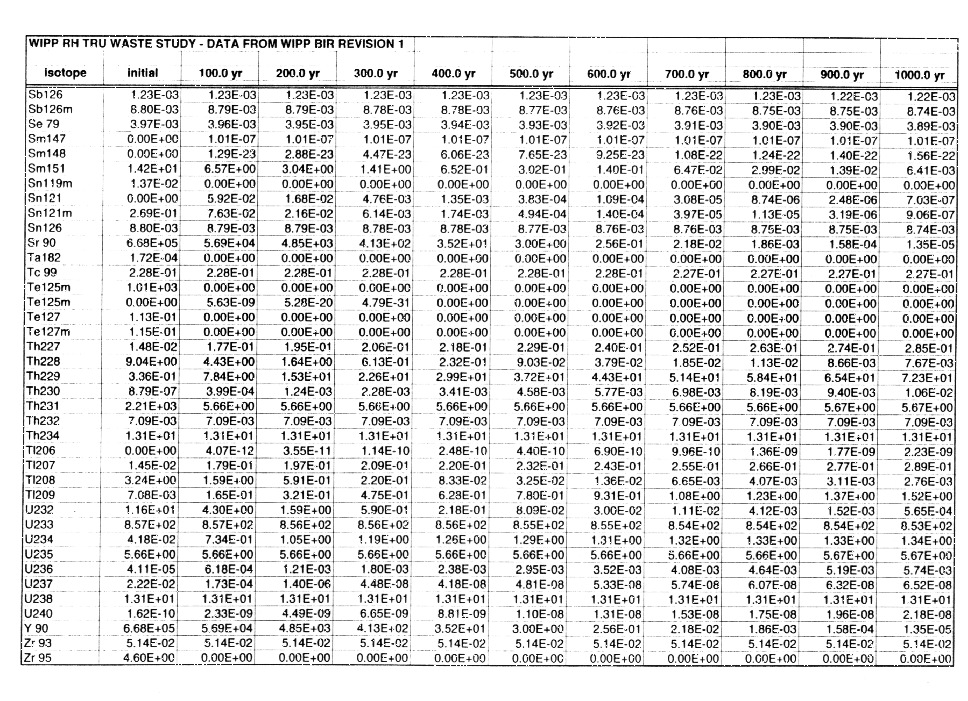
Figure 5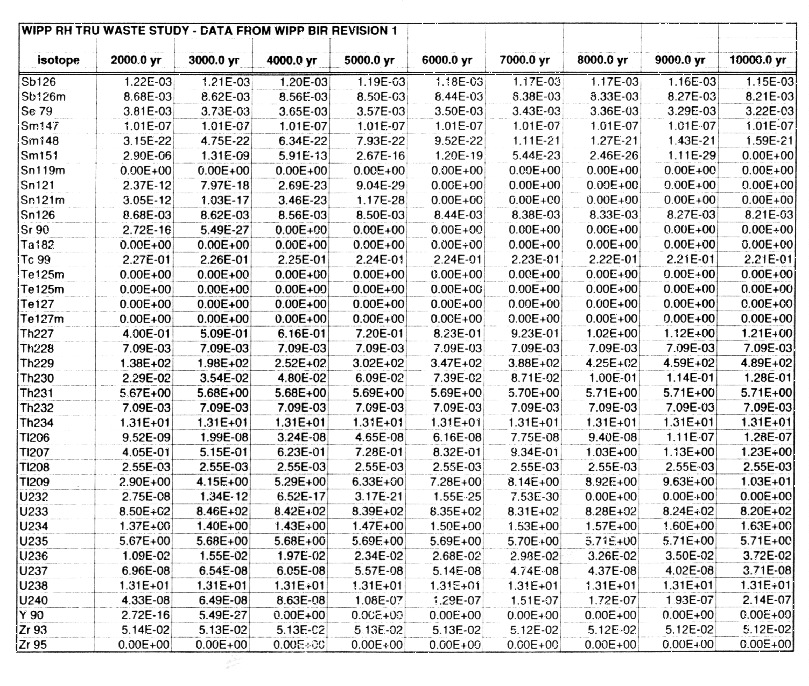
Continue to Appendix D
Return to Table of Contents
|
Notice To Users: |
Have a question about WIPP? |